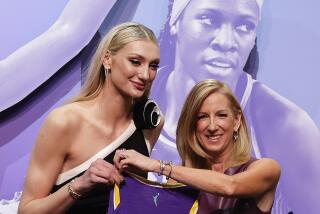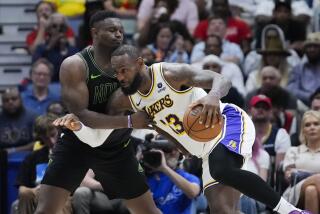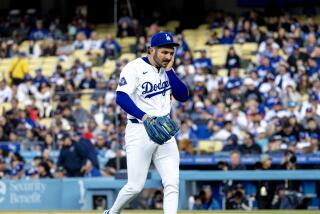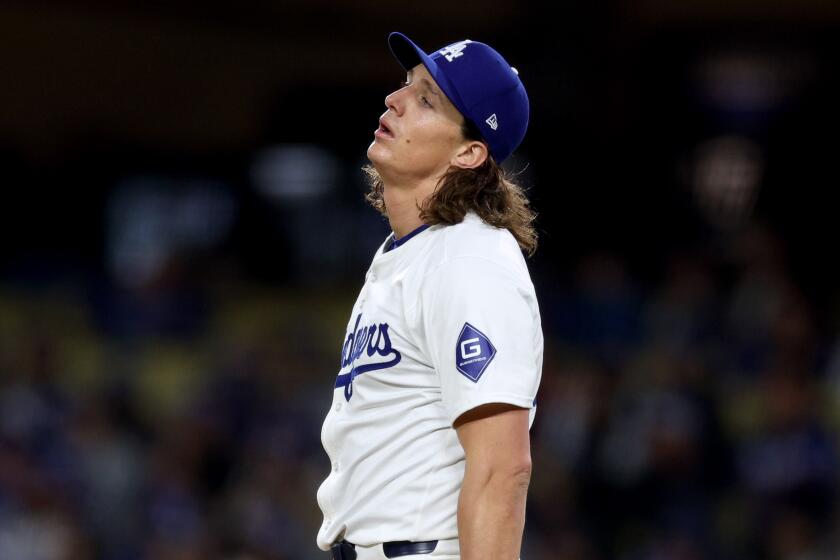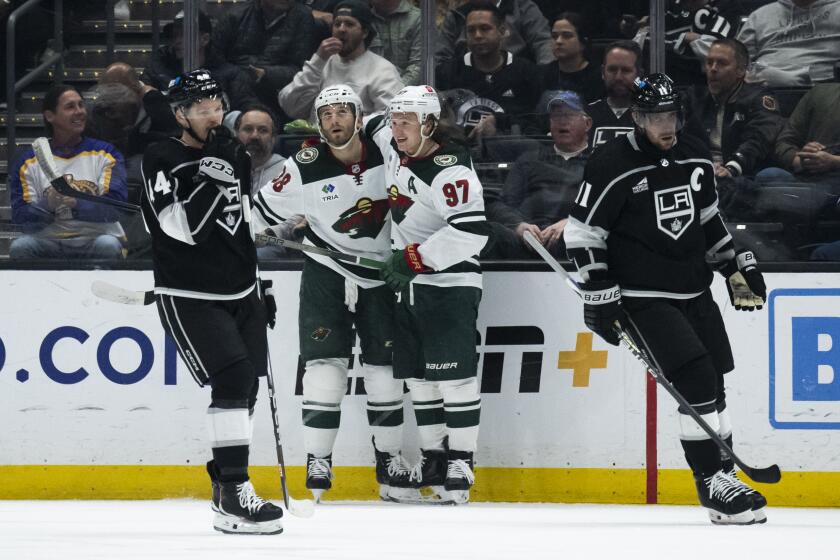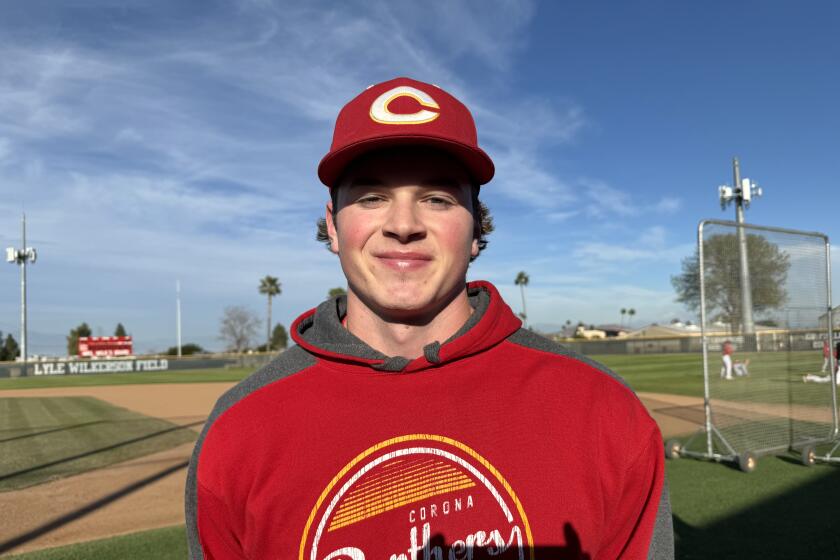World Cup USA 1994 : An Eyesore Is Transformed Into Net Asset : Sports: Private donations--none from World Cup--turn trashy lot into soccer field. Activists say money from international tournament has not reached their areas.
For years, the debris-strewn lot along 3rd Street just west of Downtown has been the haunt of drug dealers and prostitutes, a sinister place avoided by wary neighborhood parents strolling with their children.
“It was a dump,” said Gustavo Salazar, a resident of nearby Pico-Union, the densely populated and park-starved heart of Los Angeles’ huge Central American immigrant community.
Almost half the area’s population is younger than 18. Green space is rare and graffiti-splashed walls are prevalent. The rate of poverty is almost double the citywide average. Kids play soccer--the principal sport in this Latino immigrant enclave--on streets and sidewalks.
On Friday, though, the 3rd Street lot was the site of a dramatic transformation: Hundreds of youths kicked soccer balls on a manicured, newly seeded soccer field where homeless people’s shanties once stood. Guiding them were veteran community coaches like Fernando Bautista, still stunned that a longtime eyesore would now be available for his teams.
“This is such a pleasure,” said Bautista, who has dedicated much of his life to shuttling area kids throughout the city, looking for often-elusive fields to play soccer on. Inevitably, baseball, softball and U.S. football take precedence on limited park space. “We need two or three more of these fields,” Bautista said.
Private donations from more than 50 organizations, including the Los Angeles Times, financed the new site, dubbed the “Field of Dreams.” Administering activities is the Stuart M. Ketchum Downtown YMCA, whose officials negotiated a long-term lease with the landowner, Cathay City Development, part of a Hong Kong concern. The park is temporary, pending development of the site--something that is not expected for more than 10 years.
*
By then, said Councilman Mike Hernandez, who represents the district and pushed for the new park, the hope is that comparable soccer fields will have been created nearby.
The field’s inauguration was timed to coincide with the World Cup, though no World Cup money was used in the project. With the monthlong soccer celebrations about to conclude, many community activists are bemoaning what they call the lack of Cup proceeds directed to seeding fields and related efforts citywide--particularly in urban zones with swelling populations of soccer-crazed new immigrants.
“This was a huge, huge lost opportunity,” said Madeline Janis-Aparicio, who heads the Tourism Industry Development Council, a nonprofit group that seeks to link tourism to inner-city economic development.
With considerable fanfare, World Cup organizers had vowed to leave a legacy in Los Angeles and other host cities. Now, as Sunday’s final game concludes World Cup ‘94, Janis-Aparicio and other critics say they’ve seen little concrete evidence of benefits from the marketing extravaganza accruing to the soccer enclaves of Los Angeles.
“Whatever legacy they’re talking about hasn’t touched the Latino neighborhoods,” said Oscar Andrade, executive director of El Rescate, which works with Central American refugees in the area. “They haven’t touched this part of town.”
In response, World Cup officials say their promised bequest is well in place. Organizers cite refurbishments of five fields areawide and installation of four planned artificial-turf practice sites, one already in place at the Nickerson Gardens housing project, along with donations of 500 soccer balls, 97 uniforms, 500 T-shirts and 12 sets of goals.
*
The World Cup also donated more than $250,000 to the newly created Los Angeles Soccer Foundation, which, officials said, plans to finance field improvements, sponsor clinics and provide equipment, among other activities.
“We’ve exceeded expectations,” said Brad Rothenberg, assistant vice president of World Cup USA. “I think the impression everyone has is that the World Cup has extremely deep pockets. But we can’t satisfy everybody. . . . Anything we do is gravy.”
Nonetheless, the legacy has not yet been evident to Jess Kimbrell, one of the harried city parks officials who struggle daily to match some of the thousands of club teams in the area with limited numbers of available fields. This spring, authorities made city fields available to World Cup organizers, who conducted soccer clinics and other events.
“They were telling us they would leave a legacy, but we didn’t see it,” said Kimbrell, senior director of municipal sports for the city of Los Angeles. “We haven’t gotten anything from them. We haven’t even seen T-shirts.”
A lack of fields--not a paucity of interest--is often considered the most pressing hurdle facing the development of soccer in Los Angeles. At Belmont High School, a perennial city soccer power that draws from a large Central American and Mexican-born student base, players often practice on concrete.
“I’d like to see a little bit of the profit of the World Cup go towards making more fields,” said Nancy Carr-Swaim, a Belmont physical education teacher who coaches the soccer team.
For his part, Mayor Richard J. Riordan complimented the effort of World Cup organizers.
“I think the World Cup has been very good,” the mayor said during the inauguration of the 3rd Street park. “The glass was half-empty, now it’s half-full, and I think they had a lot to do with it.”
Many area residents came out Friday to view firsthand the transformation of the 3rd Street site, which is virtually in the shadow of the glittering high-rises of Los Angeles’ financial district. Though plans to build the field have been in the works for 18 months, a volunteer corps only completed cleanup last weekend, hauling away remaining refuse.
The facility will be staffed six days a week through grants from the Amateur Athletic Foundation of Los Angeles, which was set up with profits from the 1984 Olympics. At the site, instructors will offer soccer clinics and youth leagues, along with ongoing education, arts and other programs.
Mildred Barrientos, a 26-year-old mother of three and avid soccer fan from Guatemala, examined the shiny new grass and set eyes on hundreds of youngsters cavorting on what was long a dumping ground. “This,” she concluded, “will give the kids something besides gangs and graffiti.”
More to Read
Get our high school sports newsletter
Prep Rally is devoted to the SoCal high school sports experience, bringing you scores, stories and a behind-the-scenes look at what makes prep sports so popular.
You may occasionally receive promotional content from the Los Angeles Times.
